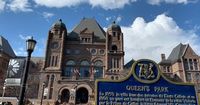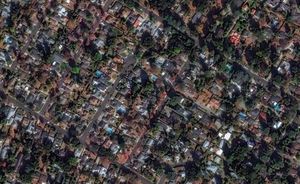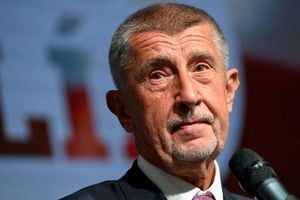It’s not every day that Canadian provincial politics and U.S. presidential drama collide in such spectacular fashion, but that’s exactly what unfolded in Ontario this October. Premier Doug Ford, never one to mince words, delivered a fiery speech in Kenora on October 15, 2025, calling U.S. President Donald Trump a "tyrant south of the border" and a "real piece of work"—a move that sent shockwaves through both sides of the border, according to CTV News Toronto and local reporting.
Ford’s outburst wasn’t just rhetorical bluster. Since Trump’s return to the White House at the start of 2025, the U.S. has imposed sweeping new tariffs on nearly 100 countries, including Canada, igniting what many are calling a global trade war. The economic fallout has been swift and severe. Ford, who rode a wave of economic anxiety to secure his third term as Ontario’s Premier earlier this year, has made standing up to U.S. trade aggression a central plank of his government’s agenda. "We have to be more resilient and self-reliant, and not just rely on the U.S.," Ford told the Kenora crowd, gathered for the announcement of a $50 million provincial investment in a new hospital and healthcare campus.
Initially, Ford floated the idea of an "Am-Can Fortress"—a sort of economic alliance between Ontario and the U.S.—but found little appetite for partnership from the Trump administration. Instead, Ford has pivoted to a more combative stance, advocating for counter tariffs and other tough economic measures. "I am sick and tired of sitting and rolling over, we need to fight back," he declared. "We are an economic powerhouse, we buy $3.6 billion of goods from the U.S., we’re the number one customer to the U.S., no one in the world buys more goods than we do. We need to start hitting back, and hitting back hard, (because) that’s the only thing this person (Trump) understands."
This hardline rhetoric has put Ford at odds with Prime Minister Mark Carney, who, despite considering an early renegotiation of the Canada-United States-Mexico Agreement (CUSMA)—currently scheduled for review on July 1, 2026—has so far resisted calls for widespread counter tariffs. The once-friendly relationship between Ford and Carney has cooled noticeably in recent weeks, with the Premier now seeking new allies among U.S. governors and the broader American public.
To that end, Ford is launching a $75 million advertising campaign in the U.S., featuring the ever-popular former Republican President Ronald Reagan, hoping to sway American politicians and voters alike. As Ford explained in Kenora, "A lot of (American) governors are calling me" for continued deals on Ontario’s energy exports. But Ford warned that Ontario might consider "switching the lights off"—cutting energy supplies—if Trump "throws us under the bus."
Ford’s economic vision for Ontario is bold and multifaceted. He’s pushing for the construction of new pipelines and railroads, expanding nuclear energy, and ramping up the mining and refining of critical minerals. "A tariff on Canadians is a tax on Americans, and we’re seeing it now, their economy is slowing and there’s more unemployment. Do you know how to fix that? Make a deal with Canada, make a deal with your largest customer and get things back to normal," Ford insisted.
Back at Queen’s Park, the Ontario legislature reconvened on October 20 after nearly five months away, setting the stage for a busy fall session. Ford’s Progressive Conservatives, riding high with a comfortable majority—79 out of 124 seats—are poised to push through their economic agenda with little resistance from the opposition, at least in terms of the numbers. But the political battles ahead promise to be anything but dull.
Ford’s government has pledged to pursue “big and bold ideas” to shield Ontario from economic uncertainty. These include championing nuclear power and critical minerals, mandating Ontario-made products, and finding new ways to lower fees and taxes. "We’re eliminating red tape, strengthening internal trade and opening labour mobility across Canada while speeding up the building of infrastructure, transit, and factories that create new jobs and the conditions that businesses need to invest in Ontario," Ford’s office told CTV News Toronto.
But not everyone is convinced. Opposition Leader Marit Stiles of the NDP has criticized what she calls Ford’s “wait and see approach,” especially in the wake of Stellantis’s decision to move some production from Ontario to the U.S. “This wait and see approach that the premier is taking is not saving a single job,” Stiles said in Windsor. The Ontario Green Party is homing in on affordability issues, while the Liberals—still reeling from leader Bonnie Crombie’s decision to step aside after a poor leadership review—are focusing on education, health care, and the cost of living.
Legislative fireworks are expected on several fronts. The government plans to introduce a bill banning speed enforcement cameras, arguing they’ve become "nothing more than a revenue tool." Critics, however, say the cameras are vital for road safety, and the debate is sure to be heated. On education, the province’s June takeover of four school boards, including the Toronto District School Board and Toronto Catholic District School Board, is still causing waves. Education Minister Paul Calandra cited poor financial management and has floated eliminating trustee positions altogether, promising more clarity by year’s end. Some parents and trustees argue that suspending trustees reduces local accountability, a point of contention that’s unlikely to fade soon.
Another hot-button issue is Ontario’s Skills Development Fund (SDF). Originally set at $1.5 billion and topped up by $1 billion in May 2025 to help workers weather the ongoing trade war, the SDF has come under fire for alleged lack of transparency and potential conflicts of interest tied to Premier Ford’s office. At least $100 million reportedly went to clients of lobbyists with connections to Ford, according to a CTV News analysis. Marit Stiles has filed a complaint with the province’s ethics watchdog, and opposition parties are expected to press the government hard on this front.
Health care is also on the agenda. On October 16, the government announced plans to introduce legislation making it easier for health-care workers from other provinces to practice in Ontario—a move aimed at addressing persistent shortages and improving access for patients.
Finally, the government is gearing up to table its Fall Economic Statement by November 15, laying out spending priorities and charting Ontario’s fiscal course amid the ongoing uncertainty. Ford’s campaign promise to protect Ontario’s economy from U.S. tariff threats will be put to the test as the province faces a volatile international environment and domestic pressures from all sides.
As Ontario’s political season heats up, the stakes for families, businesses, and workers across the province have rarely felt higher. With Ford’s combative stance toward the U.S., a restless opposition, and major policy battles looming, the next few months are set to be anything but business as usual at Queen’s Park.




